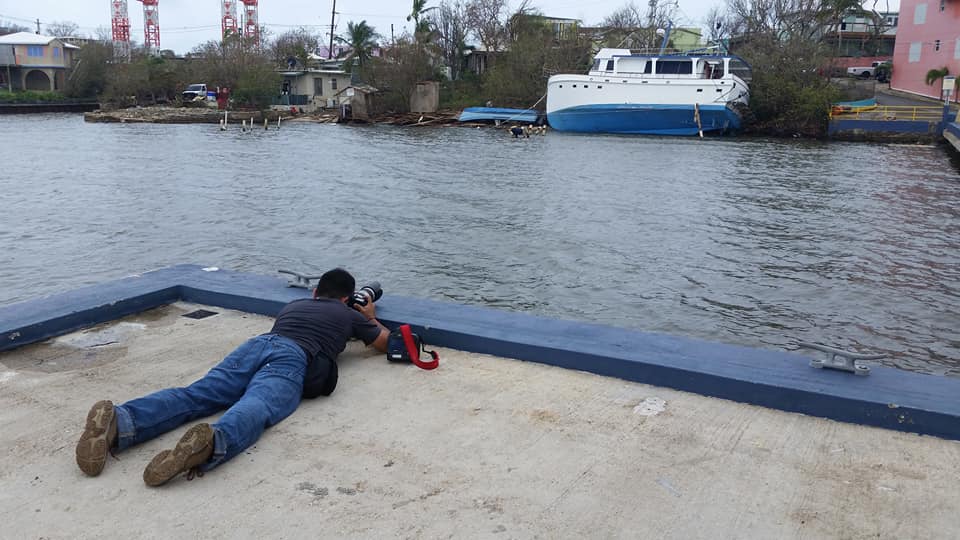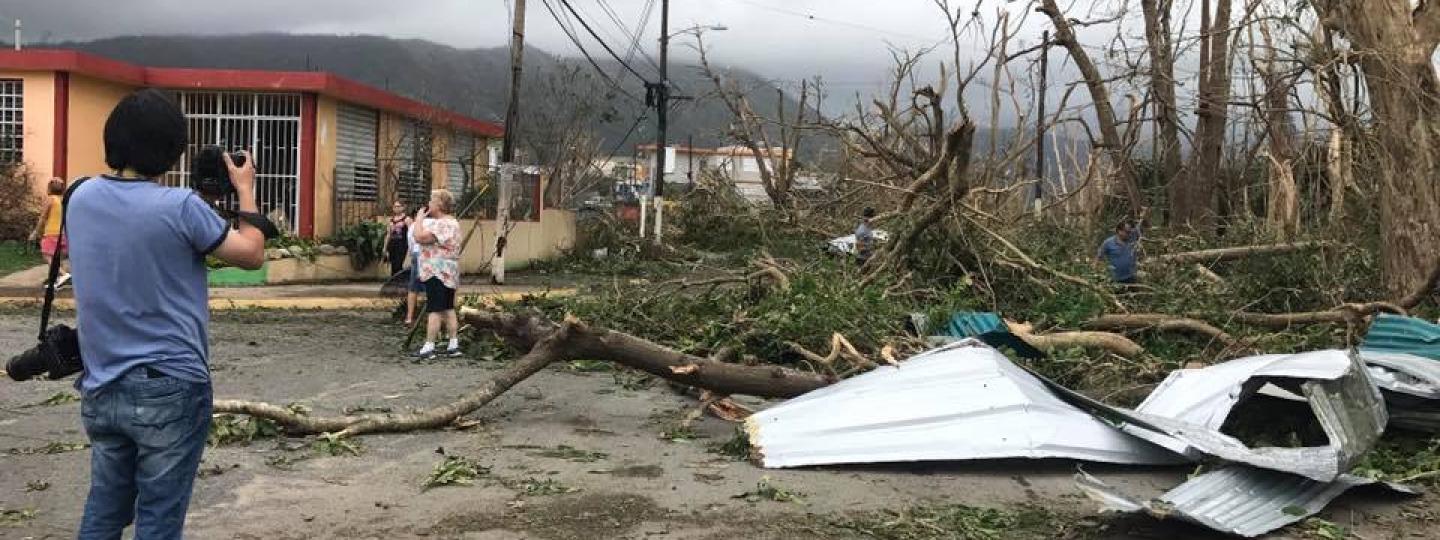Puerto Rico's GFR Media sent teams of journalists to 12 different regions before Hurricane Maria hit the island one week ago.
They planned. They prepared. They took what they'd learned from Hurricane Irma earlier in the month.
But when the storm hit, GFR's newsrooms, El Nuevo Día and Primera Hora, lost contact with all of them.
Journalists in Puerto Rico know how to cover hurricanes. It's part of living there.
"But in this case, we were ready but not expecting what’s going on," said Cristina Fernández, deputy director of lifestyles and entertainment for both publications. Because it's hard to get calls in or out, we spoke via Facebook Messenger's call feature.
Here's how the newsroom, with 130 journalists, covered the hurricane when power, phones and internet went down, how they dealt with the devastation and how they plan to follow a story that will need to be told there for months and months to come.
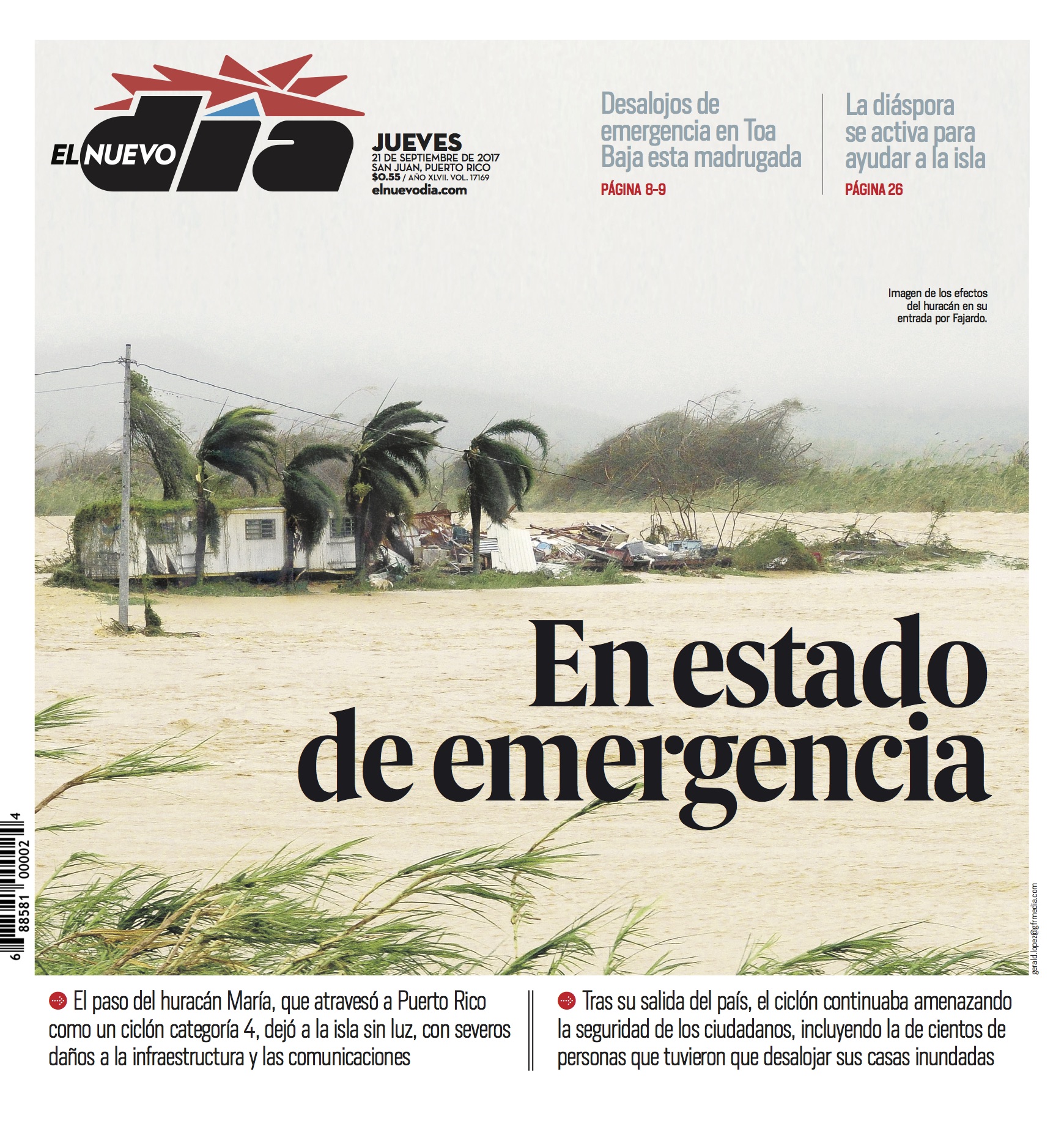
The team that would remain in the newsroom came on Tuesday. Hurricane Maria hit Puerto Rico after 6 a.m. on Wednesday morning. It battered the island for more than 15 hours.
"Everything changed," Fernández said. There were people in the office and people around Puerto Rico, "and there was no communication."
The newsroom had backup teams, just in case, but one whole team couldn't be reached. By Thursday morning, journalists started making their way back to the newsroom. Some had lost belongings. Some had lost their homes. But they were there to work.
The newsroom couldn't put out the newspapers, but they continued to report online. They knew they were serving the many Puerto Ricans outside of Puerto Rico. But it was no good for those on the island.
A local radio station had them covered, though.
WAPA Radio managed to keep transmitting and read stories from El Nuevo Día and Primera Hora, thanking the newsroom for their work, Fernández said.
"And so Puerto Rico got the news because of that."
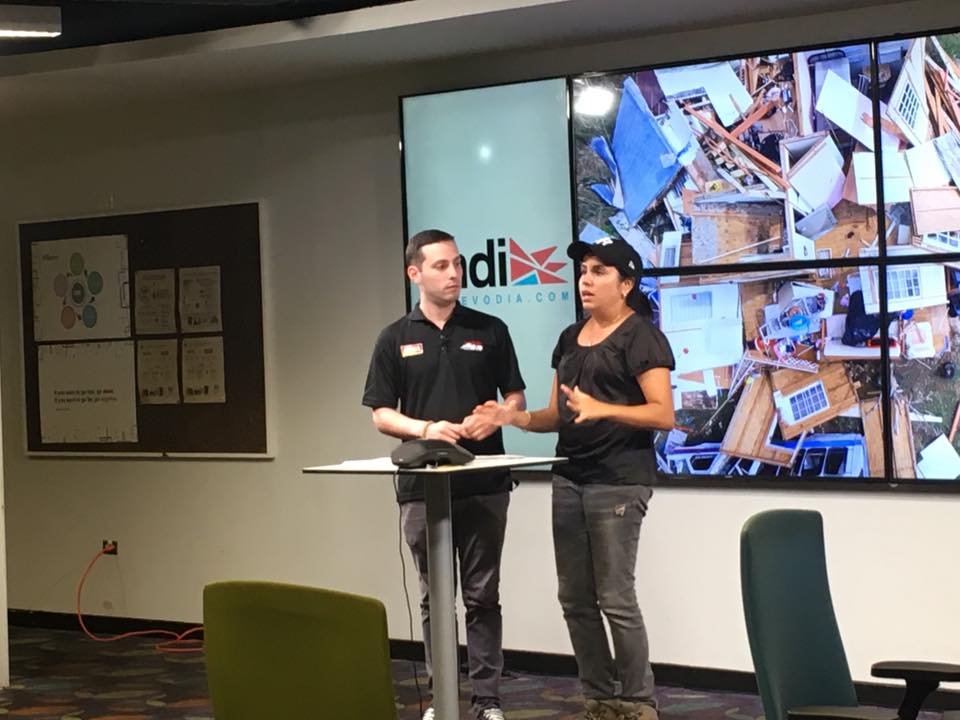
As journalists made their way back to the newsroom to cover the news, GFR Media had one more unexpected hurtle — rescuing a pair of journalists they couldn't reach. A team of two had embedded on Vieques, and the newsroom couldn't make contact.
It sent a helicopter to fly around the tiny island and landed in a public park. The assistant pilot asked those gathered for the reporter and photographer. The community knew where to find them, Fernández said, and got word to them.
The newsroom has now covered Hurricane Maria and its aftermath for a week. Journalists are starting to wear down, and they're sent home to be with family and rest. But many of them want to stay, Fernández said. This is where they'll get information.
"We’re back in the 1980s in terms of communications."
A few days ago, a production manager headed into the northwest part of the island with a satellite phone. She aired Facebook Lives, asking the communities there what they needed. It was the first time the region had been heard from by outsiders.
Now, they're scrambling to get out of the San Juan metro, said Luis Alberto Ferré Rangel, GFR Media's general director, trying to establish a permanent physical presence in four towns that were hardest hit: Ponce, Mayagüez, Arecibo and Utuado.
It's a different kind of devastation than San Juan saw, he said. It's much worse. The newsroom is trying to get satellite phones so reporters can set up camp in those places and report live on the conditions there.
"As you know, newsrooms live for these moments," Ferré Rangel said.
Reporters who themselves lost things to the storm showed up to help cover the unfolding story.
"It just speaks to the highest level of solidarity and dedication for the newspaper," he said, "and for what we’re doing for Puerto Rico."
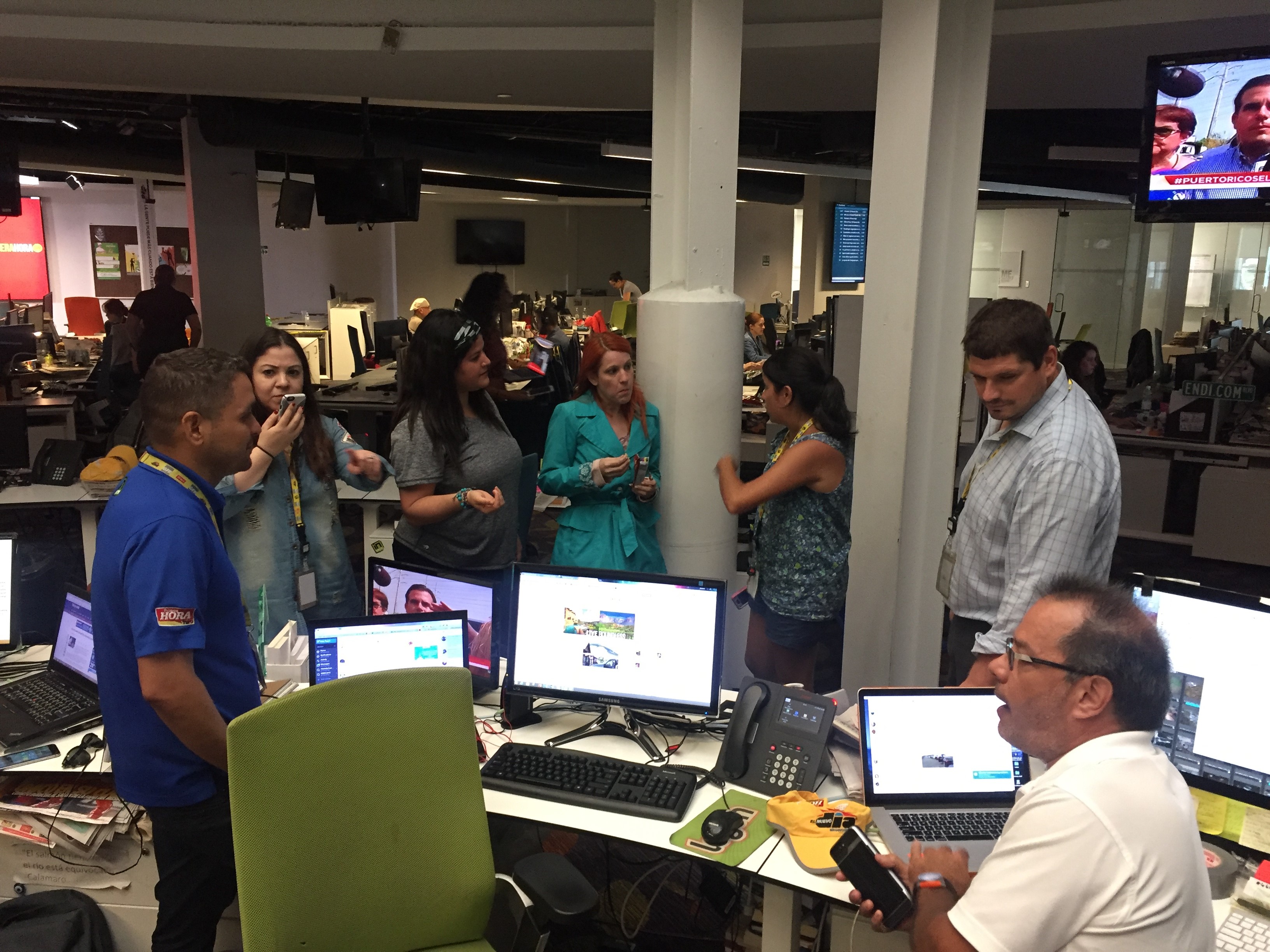
Fernández has seen claims that journalists in other parts of the U.S. are busy covering football instead of the aftermath of Maria. She hasn't been able to see that for herself since cable is down, but she has seen, and worked near, journalists from national outlets.
GFR opened its second floor to journalists from other outlets who could get there, offering power, internet, food and water. The New York Times sent a team of six, Ferré Rangel said. The Washington Post sent a team of four. There have been reporters from Agencia EFE and Huffington Post, too, plus other mainland broadcast journalists.
"This has been ongoing since Thursday," Fernández said.
"I do think that there has been a presence of the U.S. media here in Puerto Rico," Ferré Rangel said.
The New York Times and The Washington Post, in particular, have stayed on the story and the recovery efforts, he said. And that's what's needed now — sustained coverage.
"This is the most important part of the story."
